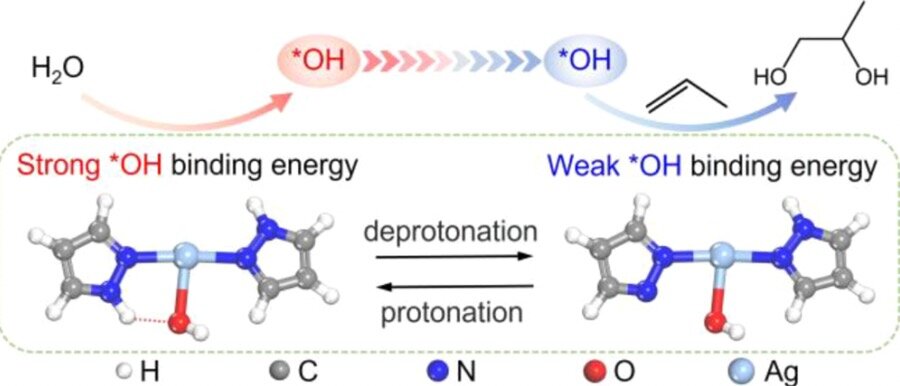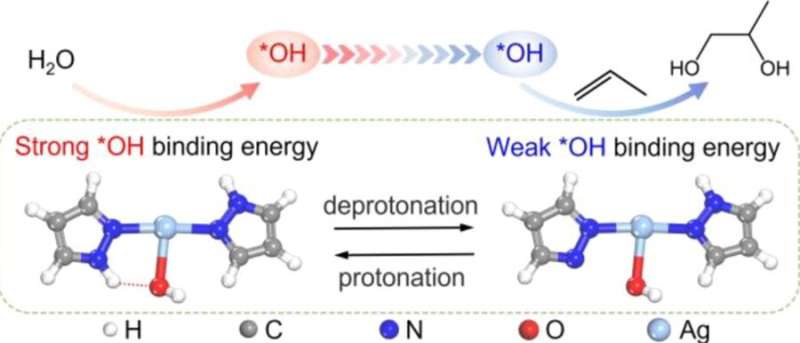

A research team led by Prof. Geng Zhigang from the University of Science and Technology of China (USTC) designed a molecular catalyst that can undergo dynamically reversible interconversion for the electrooxidation of propylene into 1,2-propylene glycol. This work was published in Journal of the American Chemical Society.
1,2-propylene glycol (PG) is an important chemical material. The traditional production of PG includes the oxidation of propylene into propylene oxide and the hydrolysis of propylene oxide into PG. In this process, highly polluting chlorine is used as the oxidant and the hydrolysis of propylene oxide requires high temperature or acid condition.
In contrast, the one-step electrooxidation of propylene to 1,2-propanediol not only simplifies the production process, but also avoids the use of chlorine gas by using water as the oxygen source, reducing the pollution and energy cost.
In the electrooxidation of propylene into PG, the generation of *OH and the coupling of *OH and propylene are two key steps. The strong adsorption of catalyst to *OH favors the dissociation of H2O into *OH, while the weak adsorption favors the coupling of *OH and propylene. Such process results in a scaling relation of the binding energy of *OH over catalysts, severely restricting the catalytic performances for propylene electrooxidation.
The researchers designed an Ag pyrazole molecular catalyst (AgPz) with a dynamically reversible interconversion structure. Due to the hydrogen bond between pyrrolic N-H and *OH, AgPz with a pyrrolic N-H structure has strong adsorption to *OH, promoting the dissociation of water to form *OH. The pyrrolic N-H structure is prone to deprotonation, which forms H vacancies and leads to the loss of hydrogen bonds. AgPz with H vacancy structures have weaker adsorption to *OH, which in turn accelerates the coupling of *OH and propylene.
Subsequently, the H vacancy recombines with hydrogen, reforming AgPz with a pyrrolic N-H structure. The dynamical interconversion leads to changeable binding energy of *OH over AgPz, which breaks the scaling relation and effectively increase enhance the electrooxidation of propylene.
Performance evaluation showed that at a working potential of 2.0 V versus Ag/AgCl electrode, the yield rates of PG using AgPz as catalyst reached 288.9 mmol gcat-1 h-1, which is more than one order of magnitude higher than the previous highest rate.
More information:
Jingwen Ke et al, Dynamically Reversible Interconversion of Molecular Catalysts for Efficient Electrooxidation of Propylene into Propylene Glycol, Journal of the American Chemical Society (2023). DOI: 10.1021/jacs.3c00660
Provided by
University of Science and Technology of China
Citation:
A breakthrough in the electrooxidation of propylene (2023, May 31)
retrieved 31 May 2023
from https://phys.org/news/2023-05-breakthrough-electrooxidation-propylene.html
This document is subject to copyright. Apart from any fair dealing for the purpose of private study or research, no
part may be reproduced without the written permission. The content is provided for information purposes only.